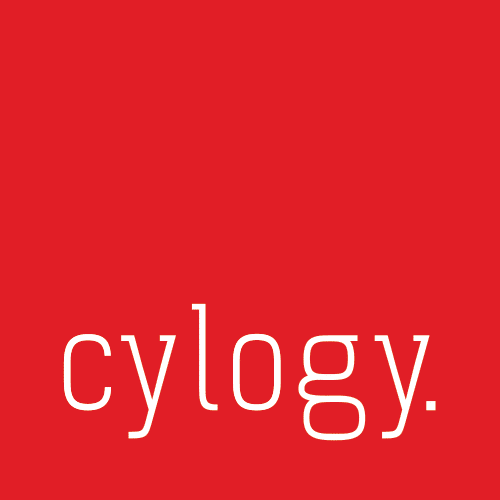Using Sitecore as a headless CMS has some exciting possibilities for marketing teams, providing the ability to operate more flexibly in an omnichannel world. The tools that Sitecore has released to support headless publishing allow teams to combine the powerful features of Sitecore with the lightweight advantages of headless delivery. It means you can still leverage both market-leading personalization and the digital marketing muscle of the Sitecore platform.
In this post, we’re going to explore six of the main reasons why marketing teams using Sitecore might want to consider going headless.
What is a headless CMS?
Not everyone is familiar with what a headless CMS is. Normally, the CMS component of a DXP like Sitecore delivers everything relating to your content, including how it is presented to the visitors who come to your site. But with a headless CMS, the way your content is displayed is decoupled from your CMS so you have a completely separate “presentation layer” that communicates with Sitecore though APIs.
If you were using Sitecore as a headless CMS, you may have all your content sitting with Sitecore as you normally would, but how it is actually presented in a website would be defined away from Sitecore.
Let’s take a deeper dive into why marketing teams might want to consider using Sitecore as a headless CMS.
1. Access to a wider development talent pool
Sitecore developers continue to be in-demand, with specific Sitecore development experience a prized commodity. This means it can be harder to find and retain the right specialist Sitecore development talent, and certainly makes it more expensive. While going headless doesn’t mean you lose your need for Sitecore developers or admins for the backend, it does mean you can utilise developers without Sitecore experience for your frontend coding.
When you go headless, you can use any development framework to display your site. In practice, this allows you to hire from a much wider talent pool who doesn’t necessarily have Sitecore frontend development experience. You may have talented frontend developers you already work with, or you might want to recruit younger developers who are looking to grow their careers. The advantage here is easier and faster recruitment and retention as well as reduced spending, and ultimately, that’s going to be good news for your website.
2. Bring personalization and analytics to headless publishing
One of the major benefits of using Sitecore as a headless CMS is that marketing teams do not have to compromise on the major benefits that Sitecore delivers. Sitecore has built an API that allows you to bring personalization to a headless environment, alongside Sitecore’s digital marketing and data analysis features, without a problem. Those options are available with the latest Sitecore headless advances, and ensures you are getting the maximum value out of the platform. They can be used by any development framework that allows you to interact with an API and, again, your front end developers do not require any detailed knowledge or experience of Sitecore. However, you will still need somebody experienced to carry out the configuration and set-up of personalization and advanced analytics in the Sitecore backend, as this can be quite complex.
3. Operate in an omnichannel world across multiple environments
One of the key advantages of going headless is that you can serve up content from Sitecore across different environments, reflecting the omnichannel presence that most organizations now operate. An organization may run multiple websites and apps, and send out content across social media channels.
Going headless means you can easily provide the same content across multiple websites, formats, apps and channels, leveraging just one CMS and a single content management process for publishing. It also means you can use the same personalization and digital marketing set-up across more than one site, although there are ways in which Sitecore can be utilized to achieve multi-channel insights without going headless too. If you have a highly complex and fast-moving digital environment with new sites being set up all the time, decoupling your content from your presentation layer can make life easier for your marketing and development teams.
4. A more lightweight approach with greater flexibility and scalability
A fully coupled Sitecore implementation which utilizes extensive digital marketing capabilities uses quite a lot of data and is pretty resource-intensive in terms of infrastructure; this means you can end up with a heavy application and server footprint. There are also a lot of things going on in the background and added dependencies, so when you’re deploying new sites, moving data from one environment to another or troubleshooting issues, there are multiple elements to consider.
Some of this complexity, at least in the frontend, is eliminated by going headless. You can leverage the lightweight nature of a JavaScript client framework that is far cheaper and easier to deploy, with far fewer dependencies than a fully-coupled Sitecore instance. Rather than operating a monolithic structure, everything within your presentation layer is API-driven and decoupled. The results of this are:
· Reduced infrastructure and data storage costs on the frontend, potentially reducing your Azure or AWS fees
· Much more flexibility in terms of launching and configuring your presentation; there are more options open for you in using a light JSS framework, and fewer ducks to line up in a row compared to a fully coupled Sitecore CMS
· Fewer constraints in terms of licensing that come with Sitecore which can sometimes limit the number of different sites you can use, for example, with different domains
· Greater scalability in terms of delivering new sites and presenting content across different environments, as well as overriding any licensing constraints.
If you have a simple, straightforward website you may not necessarily experience the benefits of headless, but if you have a complex and fast-moving digital ecosystem, it will be a choice to consider. If you regularly need to launch new sites against aggressive timelines, the flexibility of using Sitecore as a headless CMS that allows you to design, build and launch a site rapidly, independent of the Sitecore infrastructure and experienced development resource, can really deliver value.
5. Future-proofing your content delivery
Arguably, using Sitecore in a headless way can be seen to future-proof your content delivery. For example, if you want to change your frontend experiences and the way you deliver your presentation layer, you can do so without interrupting your Sitecore base infrastructure or backend. It makes it easier to follow a best-of-breed approach in terms of how you want to present content in your website or app, and allows you to easily expand into more channels.
At an executive level, headless delivery also gives comfort to decision-makers, as they are not making a decision that locks them into a specific presentation framework. It provides more flexibility to move to a new digital agency, for example, or even move CMS with less disruption to your customer touchpoints.
6. Easier day-to-day management
Sitecore is quite a resource-intensive environment with a lot of moving parts. While the way your site is set up is already likely to be super-reliable and robust, in a more complex digital set-up there can be more things to keep an eye on, particularly if you are often launching new microsites, moving content and making changes. While marketing teams may well leave that side of day-to-day management to their IT team or digital agency, going headless can reduce the daily effort for everybody, and means marketing teams can focus on content, design and SEO rather than having to get involved in managing Sitecore. It also allows your developers to be more agile and work on multiple projects and activities without having to juggle the preparation work that can come with a fully-coupled Sitecore site.
Thinking about using Sitecore as a headless CMS? Get in touch.
Going headless isn’t for everyone, but we think it is definitely something to consider for marketing teams running complex, fast-moving, omnichannel environments. If you’d like to discuss how to use Sitecore as a headless CMS, then get in touch!





